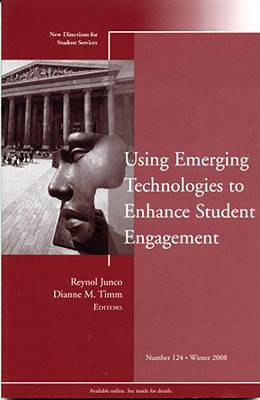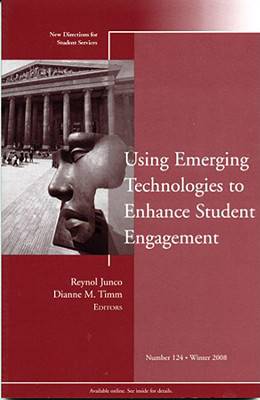
- Retrait gratuit dans votre magasin Club
- 7.000.000 titres dans notre catalogue
- Payer en toute sécurité
- Toujours un magasin près de chez vous
- Retrait gratuit dans votre magasin Club
- 7.000.0000 titres dans notre catalogue
- Payer en toute sécurité
- Toujours un magasin près de chez vous
Using Emerging Technologies to Enhance Student Engagement
New Directions for Student Services, Number 124
Description
Unfortunately, higher education faculty and staff in general, and student affairs professionals in particular, are behind the curve in their use of information technology. Student affairs professionals are only starting to become aware that they should learn about the technologies that students have already integrated into their lives.
It is imperative that student affairs professions understand these technologies and learn how to implement them to
- enhance student learning
- build a sense of community
- increase student engagement
- facilitate communication This volume examines recent research on how information technology is affecting college student development and explores ways in which institutions are responding to increased demands for using emerging technology in supporting students.
This is the 124th volume of the Jossey-Bass quarterly report series New Directions for Student Services, an indispensable resource for vice presidents of student affairs, deans of students, student counselors, and other student services professionals.
Each issue of New Directions for Student Services offers guidelines and programs for aiding students in their total development: emotional, social, physical, and intellectual.
Spécifications
Parties prenantes
- Editeur:
Contenu
- Nombre de pages :
- 132
- Langue:
- Anglais
- Collection :
- Tome:
- n° 124
Caractéristiques
- EAN:
- 9780470447000
- Date de parution :
- 14-01-09
- Format:
- Livre broché
- Format numérique:
- Trade paperback (VS)
- Dimensions :
- 147 mm x 224 mm
- Poids :
- 181 g

Les avis
Nous publions uniquement les avis qui respectent les conditions requises. Consultez nos conditions pour les avis.





